Heterogeneous catalyst design by generative models
Abstract
Understanding interactions between reactive species and surfaces remains a fundamental challenge in materials science and heterogeneous catalysis. Central to this challenge is the efficient and accurate generation of realistic surfaces and intermediate structures. Despite growing efforts, a universal and systematic approach to surface structure generation is still lacking, particularly for complex interfaces. Existing automated protocols often require extensive computations to identify stable configurations. Recent advances in dataset availability and machine learning techniques, especially in generative models, are beginning to show promise for tasks such as catalyst structure generation. In this perspective, we highlight the emerging capabilities of generative models in catalytic research and outline future directions for their applications. These include property-guided surface structure generation, efficient sampling of adsorption geometries, and the generation of complex transition-state structures. We aim to provide catalysis researchers with a clear view of current progress, outline key challenges, and identify opportunities for integrating generative models into the design and discovery of heterogeneous catalysts.
Keywords
INTRODUCTION
Catalysis has been central not only to industrial production but also to the advancement of fundamental scientific disciplines. Among various types of catalysis, heterogeneous catalysis accounts for a significant proportion of practical applications[1], from traditional thermocatalytic reactions (such as the Haber-Bosch process) to emerging electrochemical technologies (such as water splitting)[2]. Catalyst remains the core of chemical transformations; it decreases the reaction activation energy, offers alternative reaction pathways, and, as a result, promotes the reaction rate. An essential question in catalysis is identifying the active sites and understanding the reaction mechanism. Significant insights into catalytic reaction mechanisms have been gained through surface science techniques[3] and Kohn-Sham density functional theory (DFT)[4]. The integration of experimental and theoretical approaches has emerged as a powerful approach, facilitating the rational design of catalysts. Complementing this traditional paradigm, artificial intelligence (AI) has recently emerged as a transformative tool, offering new capabilities for modelling, predicting, and designing catalysts[5].
As shown in Figure 1, the number of publications on generative models in materials science and chemistry has steadily increased over recent years, reaching 476 in 2024. A similar trend is observed in surface catalysis. Despite the increasing applications, adoption remains comparatively limited, at approximately 0.4% (data from Web of Science). The scarcity of domain-specific datasets, such as those capturing adsorption configurations and complex interfacial environments on catalytic surfaces, limits the generalizability of generative models beyond well-studied systems. Furthermore, the inherent gap between theoretical simulations and experimental validation remains a critical bottleneck limiting broader adoption in this field. In this context, this perspective focuses on the use of generative models to explore catalytic reactions to further advance this emerging field, with an emphasis on diffusion-based and transformer-based approaches. We begin by outlining the evolution of heterogeneous catalyst design - from traditional paradigms to AI-driven approaches - highlighting the transformative potential of generative models. Following this, we provide an overview of the main generative architectures and their applications to understand their advancements and capabilities [Figure 2]. Through this, we aim to contextualize the emerging role of generative models in heterogeneous catalyst design.
Figure 1. (A) Trends in the number of publications on generative models applied in materials science and chemistry over recent years; (B) Sankey diagram illustrating the categorization and relative proportions of AI applications in catalyst research, based on data extracted from the Web of Science database. AI: Artificial intelligence.
THE EMERGENCE OF GENERATIVE MODELS
In computational catalysis, a conventional research workflow typically involves several key steps: enumerating possible surface structures and corresponding adsorbates[6,7], optimizing the surface models to obtain geometries and energies[8], calculating the reaction free energy profiles that connect a series of intermediates[9], and evaluating reaction barriers to estimate the overall reaction rates[10]. This process may not fully capture chemical intuition or the underlying complexity of realistic surfaces. In addition, the increasing complexity of the reaction network from reactant to product requires extensive DFT calculations. Moreover, dynamic catalytic processes, such as surface reconstruction and phase transformation, are also inevitable[3]. These challenges underscore the limitations of conventional modeling approaches and highlight the necessity for a paradigm shift in how catalysts are designed.
In addressing complex catalytic problems, machine learning interatomic potentials (MLIPs) have advanced rapidly[11], offering a promising approach to bridge the gap between atomistic-level structure and DFT-level energy. Serving as surrogate models, MLIPs accelerate the evaluation of a specific structure, including energy, force, stability, phonon spectrum, and others. However, the diversity of catalyst structures and reaction intermediates is constrained by the initial feeding structure and the extrapolation ability[12]. Optimization-based approaches, such as global minimal hopping[13], genetic algorithm[14], and meta-dynamics[15], combined with MLIP, have enabled the discovery of new active surfaces and reaction pathways.
In recent years, due to the generation and availability of massive data sets, there has been a meteoric rise in the employment of generative models. These models have emerged as promising candidates for tackling the inverse problem of structure–property prediction and overcoming the drawbacks of forward design in discovering new molecules and materials[16-18]. They are particularly important, as they allow extrapolative exploration in the material or configuration space, thus enabling discoveries beyond existing datasets. Moreover, properties-oriented structure generation could be beneficial for recognizing active sites and reaction mechanisms.
OVERVIEW OF GENERATIVE MODEL ARCHITECTURES
A historical roadmap of the generative models is illustrated in Figure 3, categorizing representative models based on their application domains and underlying architectures. Early applications focused on molecular generation[19-24], followed by the extension to crystal structure prediction (CSP)[25-28], which incorporated periodicity and symmetry constraints. Building upon these developments, generative methods were further applied to surface structures and catalytic intermediates[29-32], treating these tasks as analogs to molecular generation and CSP. Two types of generative models are extensively developed [Figure 4A and B]: variational autoencoders (VAEs)[33], and generative adversarial networks (GANs)[34]. A VAE consists of two neural networks: an encoder and a decoder. The encoder approximates a posterior distribution qθ (z|x) over the latent space z given input data x, while the decoder estimates a likelihood distribution pϕ (x|z) to reconstruct the data from the latent space[35].
Figure 3. Historical roadmap of generative models for molecules (e.g., ChemicalVAE[19], MolGAN[21], UniMol[24]), crystals (e.g., CD-VAE[26], CrystaLLM[27], MatterGen[28]), and catalysts (e.g., TOF-GAN[29], Diffusion-surface[30], CatGPT[31], MAGECS[32]), covering VAE, GAN, diffusion, and Transformer paradigms. VAE: Variational autoencoder; GAN: generative adversarial network.
Figure 4. Representative architectures for generative models regarding surface structure generation: (A) VAEs; (B) GANs; (C) diffusion model; and (D) transformer model. VAEs: Variational autoencoders; GANs: generative adversarial networks.
Recent advances, particularly in transformer models[36] [Figure 4C] and diffusion models[37] [Figure 4D], have demonstrated unprecedented capabilities in generating coherent, diverse, and realistic content. Diffusion model, inspired by non-equilibrium statistical physics, corrupts the structure in a data distribution through an iterative forward diffusion process and then restores the structure through a reversed process[37].
In contrast to diffusion models, transformer-based architectures rely on multi-head attention mechanisms[36]. They process discrete tokens through an embedding layer and use attention blocks to model contextual dependencies between input elements. Beyond their exceptional multimodal capabilities, they have also been employed in CSP tasks by tokenizing crystal structures[38].
GENERATIVE MODELS IN HETEROGENEOUS CATALYSIS
Benefiting from extensive exploration of the chemical space of crystal structures, many previously unknown yet thermodynamically stable materials have been successfully discovered and synthesized[28]. These newly discovered materials can be further investigated for catalytic reactions using traditional strategies. However, directly generating surface structures and adsorbate configurations offers a more promising pathway for property-guided design (a summary of relevant methods is presented in Table 1).
Summary of representative generative models for catalyst design
| Name | Modeling principle | Complexity | Applications | Advantages |
| VAE | Latent space distribution (hidden representation) | Stable to train | CO2RR on alloy catalysts[32] | Good interpretability and efficient latent sampling |
| GAN | Realistic data distribution via adversarial feedback | Difficult to train | Ammonia synthesis with alloy catalysts[29] | High-resolution generation |
| Diffusion | Reverse-time denoising from noise | Computationally expensive but stable | Surface structure generation[30] | Strong exploration capability and accurate generation |
| Transformer | Probabilistic token dependencies in sequences | CatGPT for 2e- ORR reaction[31] | Conditional and multi-modal generation |
Surface structure generation
From a global perspective, the goal of generating sufficient surface structures is to identify the most thermodynamically stable or catalytically active crystal facets for a given material composition. This approach is particularly promising for discovering unexpected candidates in underexplored chemical spaces. Song et al. demonstrated the ability to generate novel surface structures from latent vectors in CO2 reduction[26,32]. They combined the crystal diffusion variational autoencoder (CDVAE) model with a bird swarm optimization algorithm, produced over 250,000 candidate structures, 35% of which were predicted to exhibit high catalytic activity. Among these, five alloy compositions, i.e., CuAl, AlPd, Sn2Pd5, Sn9Pd7, and CuAlSe2, were synthesized and characterized, with two achieving Faradaic efficiencies of ~90% for CO2 reduction.
From a localized perspective, the focus shifts to identifying atomic-scale active site motifs and strategies to increase their density or effectiveness. Rather than relying on public databases, Rønne et al. constructed a custom dataset of surface structures through a global structure search, which was used to train a diffusion model[30]. Tailored to confined surface systems and guided by learned forces, the model generates diverse and stable thin-film structures atop fixed substrates, outperforming random searches in resolving complex domain boundaries.
By integrating strategies both globally and locally - utilizing global search to discover diverse surface motifs and local sampling to fine-tune atomic-scale active sites - one can construct a wide spectrum of surface structures with complex compositions. To ensure an effective balance between exploration and exploitation, latent-space-based generative models can be combined with both global search heuristics and local gradient-based optimizers. The continuous nature of latent representations enables fine-tuned optimization guided by property gradients (e.g., adsorption energy). Furthermore, the incorporation of MLIP for energy and force predictions reduces the cost of multi-scale structure evaluations, making this integrated approach scalable for realistic catalyst systems.
Direct surface structure generation can also be realized using transformer models. For instance, Mok et al. trained a GPT-2-based generative model on the OC20 dataset, which generated catalyst structures that closely resemble real surfaces, although challenges such as atomic overlap remain[31]. Building on this early success, the recent expansion of the open-source ecosystem has made a growing number of pretrained transformer models publicly available. These models, with significantly improved reasoning and prediction capabilities, are poised to further accelerate the development of structure generation workflows in catalysis[39].
Adsorbate generation
Another critical challenge is generating surface models with adsorbates that account for multiple structural configurations, each corresponding to a potential thermodynamic local minimum. These alternative structures can differ not only in energy but also in reactivity and mechanistic pathways. From a kinetic perspective, variations in configuration can lead to significantly different activation energies and reaction mechanisms.
Given the high structural fidelity achievable by generative models, they offer a promising alternative to brute-force enumeration. By introducing property biases - such as adsorption energy or local stability - generative approaches may enable the inverse design of intermediate configurations. These models can be trained directly on a dataset containing the molecule adsorbed surface structure or through molecular docking of adsorbates to surfaces[40]. To ensure the physically realistic structures, several diagnostic criteria can be applied, such as interatomic distance thresholds to flag overlapping atoms, and coordination number analysis to detect under- or over-coordinated species. Furthermore, introducing surface-aware constraints - such as adsorption site templates, dipole orientation checks, or lattice symmetry operations - can substantially improve generation fidelity. Advanced anomaly detection techniques, leveraging descriptors such as adsorption energy, binding motifs, or electronic fingerprints, can further help filter out unrealistic configurations and enhance the catalytic relevance.
Beyond stable intermediate states, the transition state (TS) structures between adsorbed intermediates are also essential in catalytic research. TS search could be reframed as a constrained structure generation problem, where the desired output satisfies specific criteria, such as possessing only one negative eigenvalue in the Hessian matrix. This idea has been demonstrated in molecular systems by 2D reaction graphs[41] or joint distributions of multiple molecules that form an elementary reaction[42]. For these tasks, preserving physical symmetries such as SE(3) equivariant or object-aware SE(3) equivariant is likely necessary.
OUTLOOK
The rapid growth of computing power - driven by breakthroughs in hardware, GPU architectures, and optimization algorithms - has propelled us into the era of AI. In scientific research, AI serves as a transformative tool, capable of solving complex mathematical equations, automating high-throughput experimentation, and accelerating data-driven discovery across various disciplines.
Among AI approaches, generative models, in particular, offer extrapolative capabilities that are valuable across various fields of materials science and heterogeneous catalysis. The evolution from early architectures such as VAE and GAN to more recent diffusion and transformer models has significantly improved the validity and versatility of generated outputs, while also making training processes more manageable and efficient. These models have proven to be applicable far beyond bulk CSP, making them highly relevant to research problems involving complex materials.
In catalysis, generative models are particularly compelling. Structurally, the field has increasingly turned to complex systems such as high-entropy alloys and oxides, which often involve four or more elements with multiple coexisting phases. In terms of reactivity, adsorbed intermediates frequently contain large and diverse molecular species, including elements such as C, N, O, and S. Furthermore, from a mechanistic perspective, dynamic catalytic behavior - including surface reconstruction and transient active sites - requires detailed modeling that goes beyond static configurations. During generation, sufficient sampling of diverse surface–adsorbate configurations can be enhanced by combining data augmentation, heuristic latent space search, and active learning strategies.
Property-guided generative modeling stands out as a particularly promising yet underexplored direction in catalyst design. Both diffusion and transformer models are well-suited for this task. Moreover, combining the multimodal representation capabilities of transformers with the high-fidelity generative power of diffusion models presents a compelling opportunity to advance property-driven inverse design of catalytic materials.
To fully unlock the potential of generative models in catalysis, data-related challenges must also be addressed. To support generative models, high-fidelity datasets that reflect realistic surface structures and reaction conditions are necessary. In parallel, data-efficient strategies such as transfer learning, active learning, and self-supervised learning can reduce labeling costs and accelerate model development.
DECLARATIONS
Authors’ contributions
Wrote this manuscript: Yang, C.; Ou, P.
Conceptualized this project: Yang, C.; Wang, L.; Zhu, J.
All authors discussed and contributed to the final version of the manuscript.
Availability of data and materials
The data supporting the findings can be obtained from the corresponding author upon reasonable request.
Financial support and sponsorship
Ou, P. acknowledges support from the National University of Singapore through the Presidential Young Professorship (PYP) Start-Up Grant (A-0010024-00-00) and the White Space Fund (A-0010024-01-00).
Conflicts of interest
All authors declared that there are no conflicts of interest.
Ethical approval and consent to participate
Not applicable.
Consent for publication
Not applicable.
Copyright
© The Author(s) 2025.
REFERENCES
1. Vogt, C.; Weckhuysen, B. M. The concept of active site in heterogeneous catalysis. Nat. Rev. Chem. 2022, 6, 89-111.
2. Friend, C. M.; Xu, B. Heterogeneous catalysis: a central science for a sustainable future. Acc. Chem. Res. 2017, 50, 517-21.
3. Huang, T.; Cong, X.; Wu, S.; et al. Visualizing the structural evolution of individual active sites in MoS2 during electrocatalytic hydrogen evolution reaction. Nat. Catal. 2024, 7, 646-54.
4. Nørskov, J. K.; Studt, F.; Abild-Pedersen, F.; Bligaard, T. Fundamental Concepts in Heterogeneous Catalysis. John Wiley & Sons; 2014.
5. Lai, N. S.; Tew, Y. S.; Zhong, X.; et al. Artificial intelligence (AI) workflow for catalyst design and optimization. Ind. Eng. Chem. Res. 2023, 62, 17835-48.
6. Sharma, U.; Nguyen, A.; Kitchin, J. R.; Ulissi, Z. W.; Janik, M. J. Enumeration of surface site nuclearity and shape in a database of intermetallic low-index surface facets. J. Catal. 2024, 440, 115795.
7. Tran, K.; Ulissi, Z. W. Active learning across intermetallics to guide discovery of electrocatalysts for CO2 reduction and H2 evolution. Nat. Catal. 2018, 1, 696-703.
8. Reveles, J. U.; Köster, A. M. Geometry optimization in density functional methods. J. Comput. Chem. 2004, 25, 1109-16.
9. Ye, J.; Liu, C.; Mei, D.; Ge, Q. Active oxygen vacancy site for methanol synthesis from CO2 hydrogenation on In2O3(110): a DFT study. ACS. Catal. 2013, 3, 1296-306.
10. Liu, Z. P.; Hu, P. General rules for predicting where a catalytic reaction should occur on metal surfaces: a density functional theory study of C-H and C-O bond breaking/making on flat, stepped, and kinked metal surfaces. J. Am. Chem. Soc. 2003, 125, 1958-67.
11. Ko, T. W.; Ong, S. P. Recent advances and outstanding challenges for machine learning interatomic potentials. Nat. Comput. Sci. 2023, 3, 998-1000.
12. Pitfield, J.; Brix, F.; Tang, Z.; et al. Augmentation of universal potentials for broad applications. Phys. Rev. Lett. 2025, 134, 056201.
13. Jung, H.; Sauerland, L.; Stocker, S.; Reuter, K.; Margraf, J. T. Machine-learning driven global optimization of surface adsorbate geometries. npj. Comput. Mater. 2023, 9, 1065.
14. Xu, J.; Xie, W.; Han, Y.; Hu, P. Atomistic insights into the oxidation of flat and stepped platinum surfaces using large-scale machine learning potential-based grand-canonical Monte Carlo. ACS. Catal. 2022, 12, 14812-24.
15. Yang, M.; Bonati, L.; Polino, D.; Parrinello, M. Using metadynamics to build neural network potentials for reactive events: the case of urea decomposition in water. Catal. Today. 2022, 387, 143-9.
16. Sanchez-Lengeling, B.; Aspuru-Guzik, A. Inverse molecular design using machine learning: generative models for matter engineering. Science 2018, 361, 360-5.
17. Park, H.; Li, Z.; Walsh, A. Has generative artificial intelligence solved inverse materials design? Matter 2024, 7, 2355-67.
18. Chenebuah, E. T.; Nganbe, M.; Tchagang, A. B. A deep generative modeling architecture for designing lattice-constrained perovskite materials. npj. Comput. Mater. 2024, 10, 1381.
19. Gómez-Bombarelli, R.; Wei, J. N.; Duvenaud, D.; et al. Automatic chemical design using a data-driven continuous representation of molecules. ACS. Cent. Sci. 2018, 4, 268-76.
20. Jin, W.; Barzilay, R.; Jaakkola, T. Junction tree variational autoencoder for molecular graph generation. arXiv 2018, arXiv:1802.04364. https://doi.org/10.48550/arXiv.1802.04364. (accessed 4 Jul 2025).
21. De Cao, N.; Kipf, T. MolGAN: an implicit generative model for small molecular graphs. arXiv 2018, arXiv:1805.11973. https://doi.org/10.48550/arXiv.1805.11973. (accessed 4 Jul 2025).
22. You, J.; Liu, B.; Ying, R.; Pande, V.; Leskovec, J. Graph convolutional policy network for goal-directed molecular graph generation. arXiv 2018, arXiv:1806.02473. https://doi.org/10.48550/arXiv.1806.02473. (accessed 4 Jul 2025).
23. Hoogeboom, E.; Satorras, V. G.; Vignac, C.; Welling, M. Equivariant diffusion for molecule generation in 3D. arXiv 2022, arXiv:2203.17003. https://doi.org/10.48550/arXiv.2203.17003. (accessed 4 Jul 2025).
24. Zhou, G.; Gao, Z.; Ding, Q.; et al. Uni-Mol: a universal 3D molecular representation learning framework. ChemRxiv 2023.
25. Nouira, A.; Sokolovska, N.; Crivello, J. C. CrystalGAN: learning to discover crystallographic structures with generative adversarial networks. arXiv 2018, arXiv:1810.11203. https://doi.org/10.48550/arXiv.1810.11203. (accessed 4 Jul 2025).
26. Xie, T.; Fu, X.; Ganea, O. E.; Barzilay, R.; Jaakkola, T. Crystal diffusion variational autoencoder for periodic material generation. arXiv 2021, arXiv:2110.06197. https://doi.org/10.48550/arXiv.2110.06197. (accessed 4 Jul 2025).
27. Antunes, L. M.; Butler, K. T.; Grau-Crespo, R. Crystal structure generation with autoregressive large language modeling. Nat. Commun. 2024, 15, 10570.
28. Zeni, C.; Pinsler, R.; Zügner, D.; et al. A generative model for inorganic materials design. Nature 2025, 639, 624-32.
29. Ishikawa, A. Heterogeneous catalyst design by generative adversarial network and first-principles based microkinetics. Sci. Rep. 2022, 12, 11657.
30. Rønne, N.; Aspuru-Guzik, A.; Hammer, B. Generative diffusion model for surface structure discovery. Phys. Rev. B. 2024, 110, 235427.
31. Mok, D. H.; Back, S. Generative pretrained transformer for heterogeneous catalysts. J. Am. Chem. Soc. 2024, 146, 33712-22.
32. Song, Z.; Fan, L.; Lu, S.; Ling, C.; Zhou, Q.; Wang, J. Inverse design of promising electrocatalysts for CO2 reduction via generative models and bird swarm algorithm. Nat. Commun. 2025, 16, 1053.
33. Kingma, D. P.; Welling, M. Auto-encoding variational bayes. arXiv 2013, arXiv:1312.6114. https://doi.org/10.48550/arXiv.1312.6114. (accessed 4 Jul 2025).
34. Goodfellow, I.; Pouget-Abadie, J.; Mirza, M.; et al. Generative adversarial networks. Commun. ACM. 2020, 63, 139-44.
35. Menon, D.; Ranganathan, R. A generative approach to materials discovery, design, and optimization. ACS. Omega. 2022, 7, 25958-73.
36. Vaswani, A.; Shazeer, N.; Parmar, N.; et al. Attention is all you need. arXiv 2017, arXiv:1706.03762. https://doi.org/10.48550/arXiv.1706.03762. (accessed 4 Jul 2025).
37. Ho, J.; Jain, A.; Abbeel, P. Denoising diffusion probabilistic models. arXiv 2020, arXiv:2006.11239. https://doi.org/10.48550/arXiv.2006.11239. (accessed 4 Jul 2025).
38. Yan, K.; Li, X.; Ling, H.; et al. Invariant tokenization of crystalline materials for language model enabled generation. arXiv 2025, arXiv:2503.00152. https://doi.org/10.48550/arXiv.2503.00152. (accessed 4 Jul 2025).
39. DeepSeek-AI,
40. Martinelli, D. D. Generative machine learning for de novo drug discovery: a systematic review. Comput. Biol. Med. 2022, 145, 105403.
41. Kim, S.; Woo, J.; Kim, W. Y. Diffusion-based generative AI for exploring transition states from 2D molecular graphs. Nat. Commun. 2024, 15, 341.
Cite This Article
How to Cite
Download Citation
Export Citation File:
Type of Import
Tips on Downloading Citation
Citation Manager File Format
Type of Import
Direct Import: When the Direct Import option is selected (the default state), a dialogue box will give you the option to Save or Open the downloaded citation data. Choosing Open will either launch your citation manager or give you a choice of applications with which to use the metadata. The Save option saves the file locally for later use.
Indirect Import: When the Indirect Import option is selected, the metadata is displayed and may be copied and pasted as needed.
About This Article
Special Issue
Copyright
Data & Comments
Data





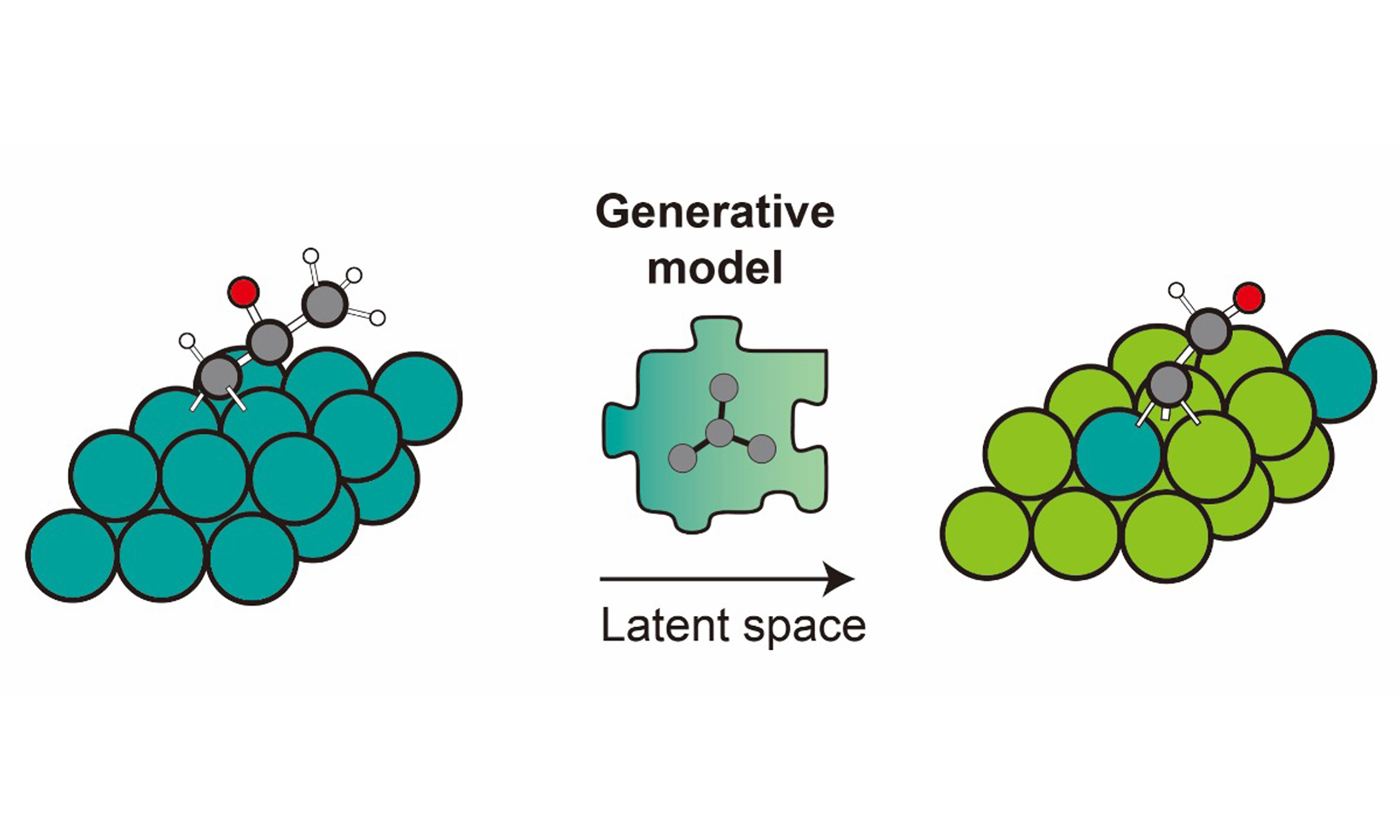
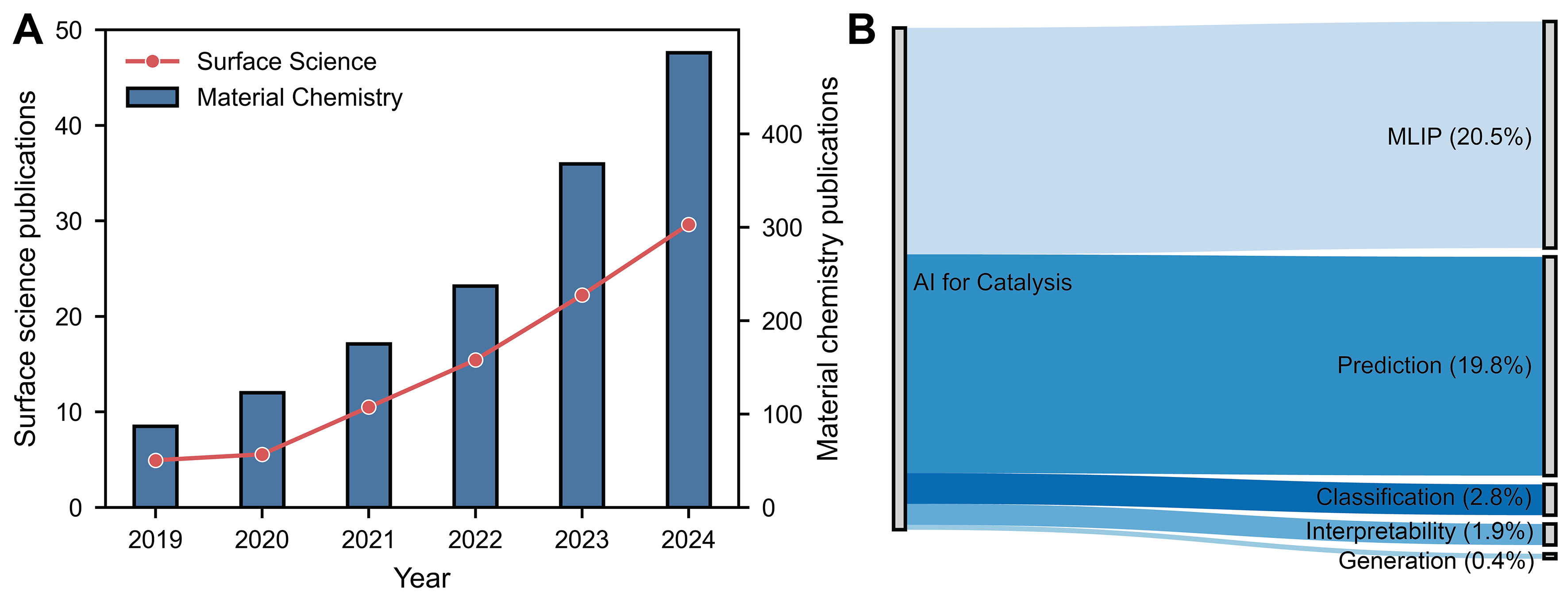
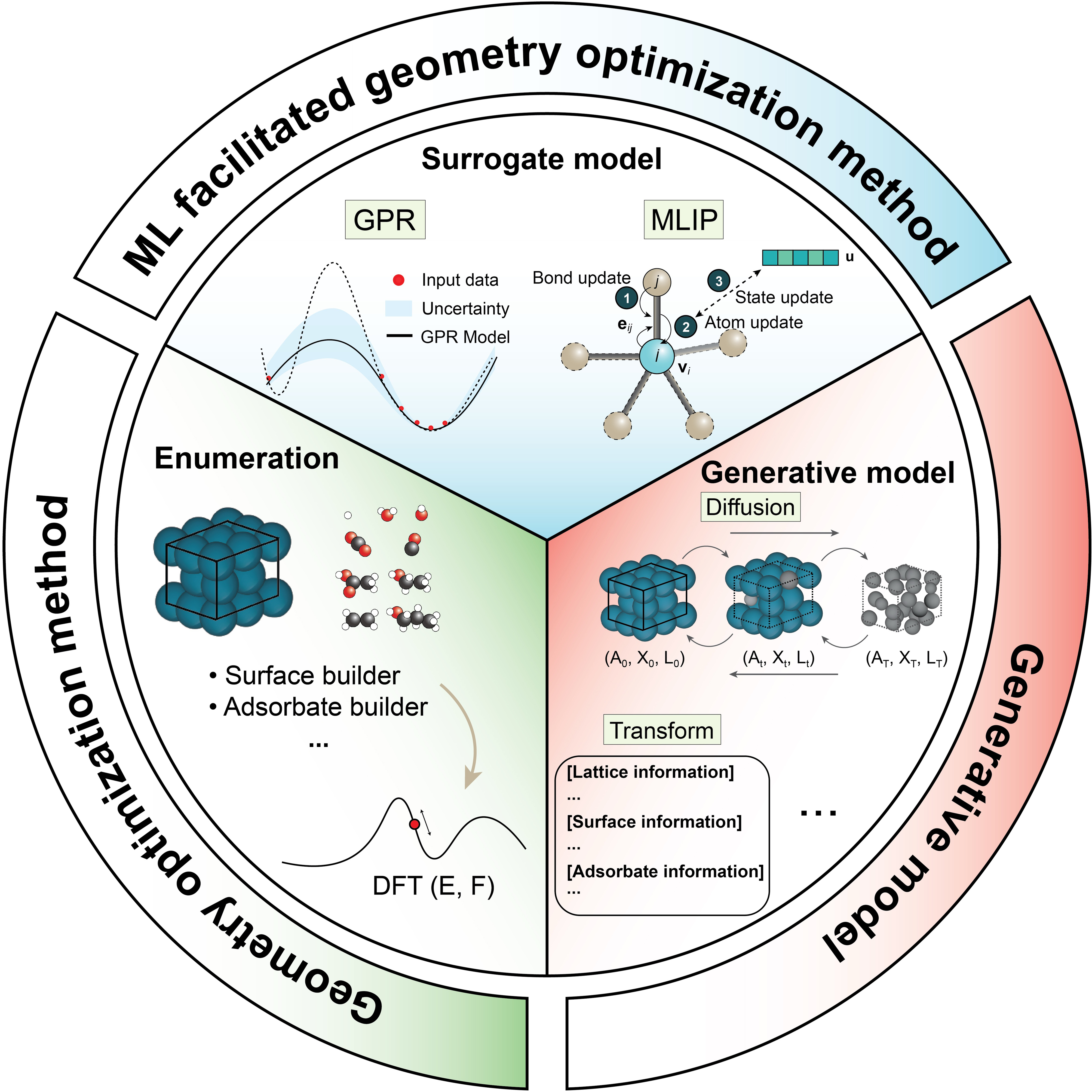
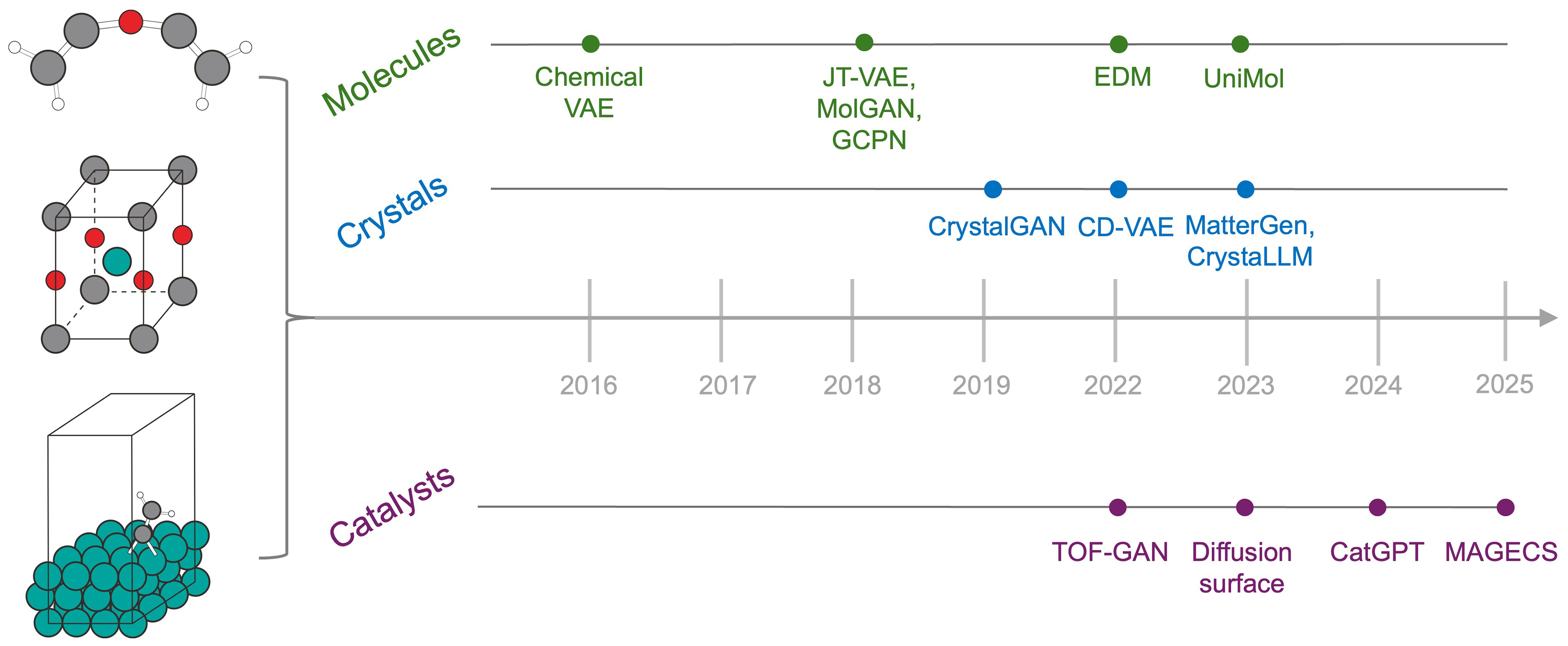
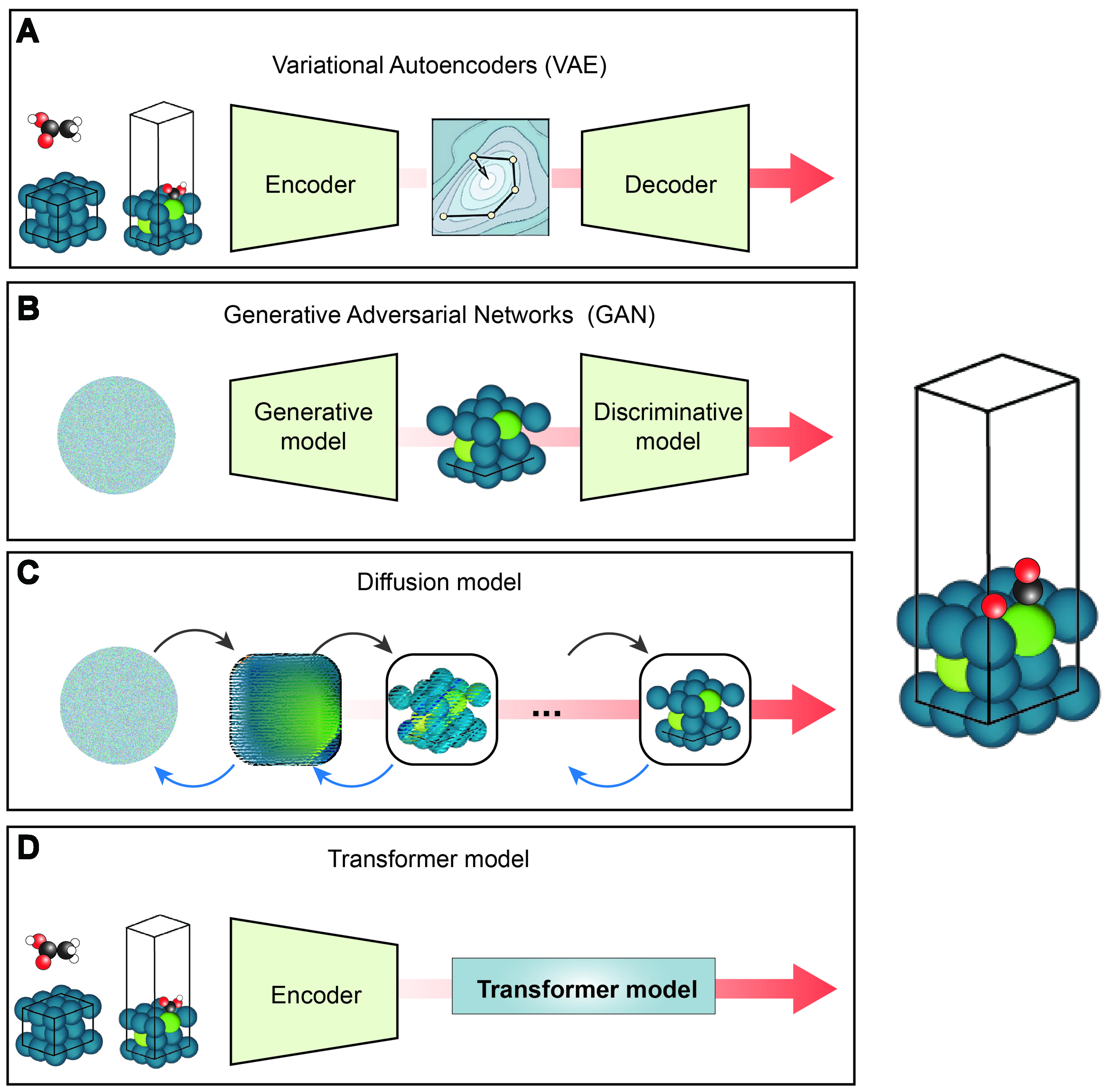






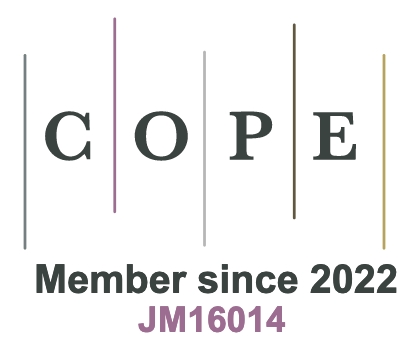




Comments
Comments must be written in English. Spam, offensive content, impersonation, and private information will not be permitted. If any comment is reported and identified as inappropriate content by OAE staff, the comment will be removed without notice. If you have any queries or need any help, please contact us at [email protected].